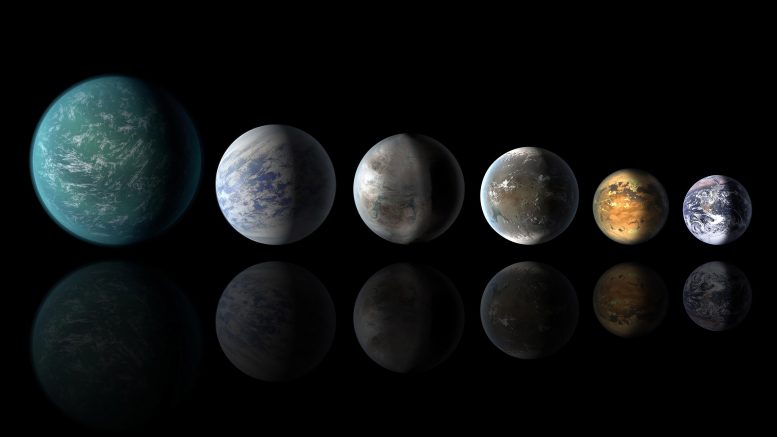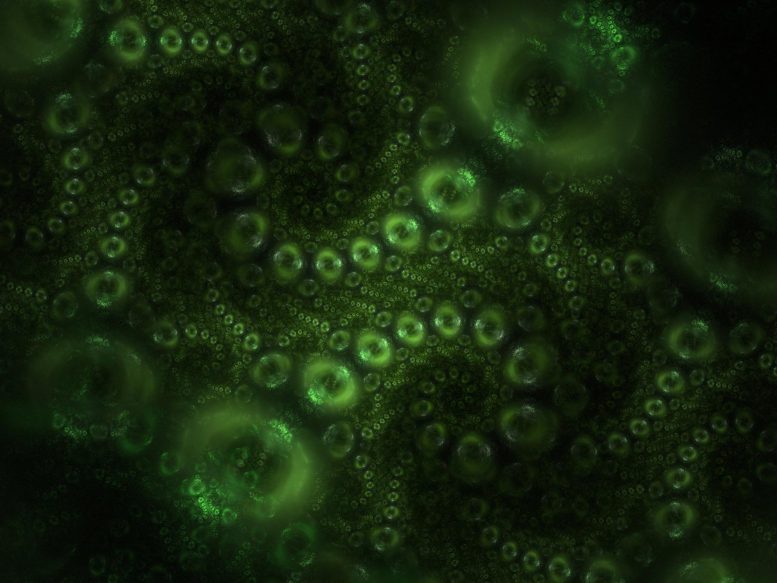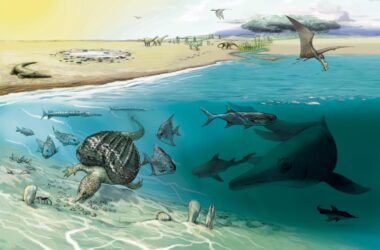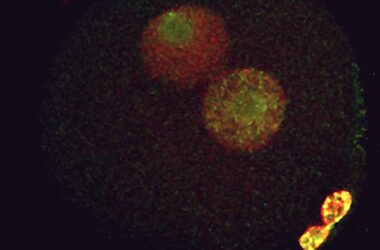La recherche de la vie extraterrestre s’est limitée à utiliser la vie sur Terre comme référence, en cherchant essentiellement la “vie telle que nous la connaissons” au-delà de la Terre. Pour les astrobiologistes qui recherchent la vie sur d’autres planètes, il n’existe tout simplement aucun outil permettant de prédire les caractéristiques de la “vie telle que nous ne la connaissons pas”.
Dans une nouvelle recherche publiée dans le Proceedings of the National Academy of Sciences (PNAS), une équipe de scientifiques s’est attaquée à cette restriction en identifiant des modèles universels dans la chimie de la vie qui ne semblent pas dépendre de molécules spécifiques. Ces résultats offrent une nouvelle possibilité de prédire les caractéristiques de la vie extraterrestre dont la biochimie est différente de celle de la vie terrestre.
“Nous voulons disposer de nouveaux outils pour identifier et même prédire les caractéristiques de la vie telle que nous ne la connaissons pas”, explique la co-auteure Sara Imari Walker de l’Arizona State University. “Pour ce faire, nous cherchons à identifier les lois universelles qui devraient s’appliquer à tout système biochimique. Cela inclut le développement d’une théorie quantitative sur les origines de la vie, et l’utilisation de la théorie et des statistiques pour guider notre recherche de la vie sur d’autres planètes.”

Les chercheurs ont découvert diverses lois d’échelle entre le nombre d’enzymes de différentes classes d’enzymes et la taille du génome d’un organisme. Crédit : NASA/Ames/JPL-Caltech
Sur Terre, la vie émerge de l’interaction de centaines de composés et de réactions chimiques. Certains de ces composés et réactions se retrouvent dans tous les organismes, créant ainsi une biochimie universellement partagée pour toute vie sur Terre. Cette notion d’universalité est toutefois spécifique à la biochimie connue et ne permet pas de prédire des exemples non encore observés.
“Nous ne sommes pas seulement les molécules qui font partie de notre corps ; nous, en tant qu’êtres vivants, sommes une propriété émergente des interactions des nombreuses molécules dont nous sommes constitués”, explique Walker, qui est professeur associé à l’école d’exploration de la Terre et de l’espace et à l’école des systèmes adaptatifs complexes de l’ASU et directeur adjoint du Beyond Center de l’ASU. “Notre travail vise à développer des moyens de transformer cette intuition philosophique en hypothèses scientifiques vérifiables.”
L’auteur principal, Dylan Gagler, qui a obtenu son master à l’ASU en 2020 et est maintenant analyste en bioinformatique chez New York University Langone Medical Center in Manhattan, said he became interested in universal biology out of a desire to better understand the phenomenon of life. “It’s a surprisingly difficult concept to pin down,” he says. “As far as I can tell, life is ultimately a biochemical process, so I wanted to explore what life is doing at that level.”
Gagler and Walker ultimately decided that enzymes, as the functional drivers of biochemistry, were a good way to approach this concept. Using the Integrated Microbial Genomes and Microbiomes database, they, together with their collaborators, were able to investigate the enzymatic makeup of bacteria, archaea and eukarya, and thereby capture the majority of Earth’s biochemistry.
Through this approach, the team was able to discover a new kind of biochemical universality by identifying statistical patterns in the biochemical function of enzymes shared across the tree of life. In so doing, they verified that statistical patterns originated from functional principles that cannot be explained by the common set of enzyme functions used by all known life, and identified scaling relationships associated with general types of functions.
“We identified this new kind of biochemical universality from the large-scale statistical patterns of biochemistry and found they are more generalizable to unknown forms of life compared to the traditional one described by the specific molecules and reactions that are common to all life on Earth,” explains co-author Hyunju Kim, an assistant research professor at ASU’s School of Earth and Space Exploration and ASU’s Beyond Center. “This discovery enables us to develop a new theory for the general rules of life, which can guide us in the search for novel examples of life.”
“We might expect these results to hold anywhere in the universe, and that’s an exciting possibility that motivates a lot of interesting work ahead,” says co-author Chris Kempes of the Santa Fe Institute.
Additional authors on this study are Bradley Karas, John Malloy, and Veronica Mierzejewski of ASU’s School of Earth and Space Exploration; and Aaron Goldman of Oberlin College and the Blue Marble Space Institute for Science.
This is the first major research resulting from the ASU-led team participating in the inaugural Interdisciplinary Consortia for Astrobiology Research (ICAR) program, funded through NASA’s Astrobiology Program. The breadth and depth of the research of the teams selected for ICAR fundings spans the spectrum of astrobiology research, from cosmic origins and planetary system formation to the origins and evolution of life and the search for life beyond Earth.
Reference: “Scaling laws in enzyme function reveal a new kind of biochemical universality” by Dylan C. Gagler, Bradley Karas, Christopher P. Kempes, John Malloy, Veronica Mierzejewski, Aaron D. Goldman, Hyunju Kim and Sara I. Walker, 25 February 2022, Proceedings of the National Academy of Sciences.
DOI: 10.1073/pnas.2106655119




